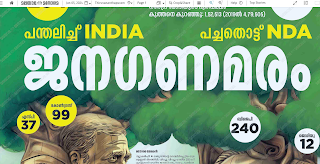XML (eXtensible Markup Language) is a markup language that allows you to define and structure data using tags and attributes. The capabilities of XML can be extended by creating new tags. Data can be structured and validated easily. XML documents works cross-platform. In XML, there is clear separation between data or contents (XML document) and presentation. The presentation is specified by the Stylesheet.
Processing Instruction (PI): The XML declaration statement that begins the XML document.
Tags (< >): The name that identifies the piece of information.
Elements: Basic units that identify and describe data. A Root element contains all other elements. Elements that contain other elements are parent elements. Elements contained in Parent elements are Child elements.
Content: Data represented by the elements.
Attributes: Provides additional information about elements and includes a name and value pair. Elements and attributes are the building blocks of DTD.
Entity: W3Schools.org (http://www.w3schools.com/dtd/dtd_entities.asp) defines entities as “variables used to define shortcuts to standard text or special characters.”
PCDATA: Text parsed by a parser.
CDATA: Characters not parsed by a parser.
DTD: Short for document type definition. Defines the structure of data in an XML document. Specifies the elements, their attributes, and their relationships. Using DTD, you can specify whether an element is mandatory or optional.
Internal DTDs occur within the XML document and cannot be used across multiple documents. External DTDs sit as separate files an can be used across multiple documents. XML documents contain references to external DTDs.
Parsing: Process that validates the structure of date in XML documents using programs called parsers. A validating parser validates the XML against the DTD.
XML Schema: Defines the structure of an XML document. It defines the elements, attributes, and the data types.
XSD language: The language used to describe the structure or elements in an XML schema. XSD allows creating new data types.
Stylesheets: Cascading style sheet (CSS) and eXtensible stylesheet language (XSL) are the stylesheets used for XML documents.
XSLT: The language used to transform XML documents into other formats such as XHTML. XSL contains XSL Transformations (XSLT) and XML Path (XPath). XML Path is the language for navigating XML docs.
Subscribe to:
Post Comments (Atom)
Newspaper front pages - June 5
Some images of front pages of newspapers after votes were counted on June 4, 2024 after a ridiculously long parliament elections. Did the ...

-
Some images of front pages of newspapers after votes were counted on June 4, 2024 after a ridiculously long parliament elections. Did the ...
-
The following classification of newspaper headlines is based on my journalism notes. They are from the point of page layout. Flush Left -Hea...
-
Leaders who pick and quibble and snipe are people who fear that a Mojofied team might threaten their own petty power. If your environment is...

No comments:
Post a Comment